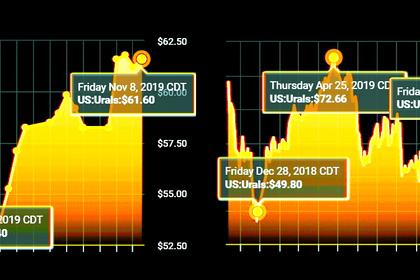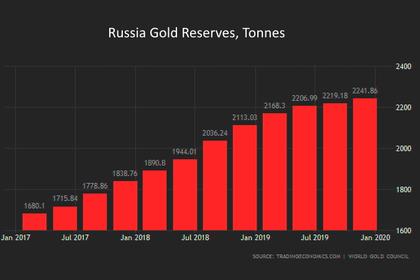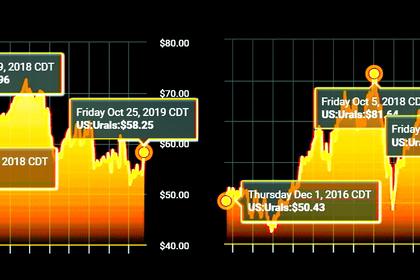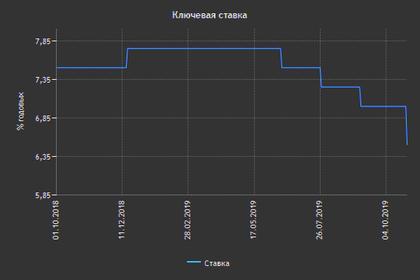ВВП РОССИИ +1.1%
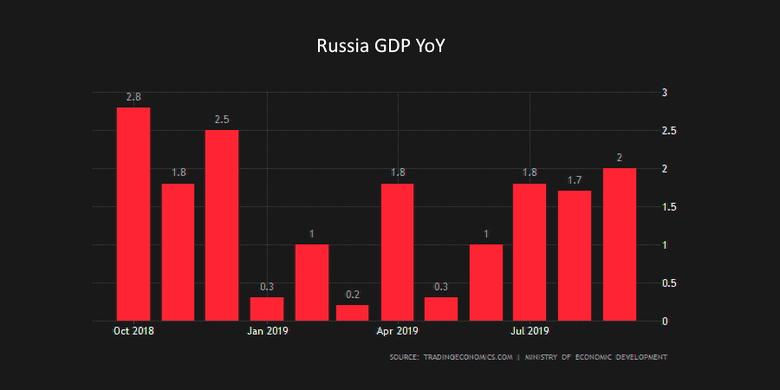
МИНЭКОНОМРАЗВИТИЯ РОССИИ - О предварительной оценке ВВП за III квартал 2019 года
По предварительной оценке Росстата, ВВП в 3кв19 вырос на 1,7 % г/г после 0,9 % г/г во 2кв19 и 0,5 % г/г в 1кв19. Отчетные данные за 3кв19 оказались несколько ниже оценки Минэкономразвития России на основе оперативных данных (1,9 % г/г). В целом за 9 месяцев 2019 года темп роста ВВП оценивается на уровне 1,1 % г/г.
По оценке Минэкономразвития России, в 3кв19 ВВП продолжил демонстрировать положительную динамику в поквартальном выражении (с исключением сезонного фактора). Очищенный от сезонности темп роста ВВП по отношению к предыдущему кварталу оценивается на уровне 0,5 % кв/кв SA в 3кв19 после аналогичного роста во 2кв19 и разового снижения на 0,1 % кв/кв SA в 1кв19. Наблюдаемая поквартальная динамика ВВП свидетельствует о возвращении экономики на траекторию роста темпом 1,5–2,0 % г/г.
В 4кв19 ожидается сохранение темпов роста экономики приблизительно на уровне 3кв19, что соответствует прогнозу Минэкономразвития России по росту ВВП в 2019 году (1,3 %). Поддержку экономическому росту до конца текущего года будет оказывать расширение кредитного предложения, которое будет происходить в первую очередь за счет операций государственного сектора – догоняющего роста расходов федерального бюджета и операций Банка России по покупке активов на валютном рынке (сверх бюджетного правила). Вместе с тем увеличение кредитного предложения по бюджетному каналу носит временный характер и имеет ограниченный потенциал для стимулирования экономической активности.
Полная pdf версия
-----
ВВП РОССИИ +1.1%

REUTERS - Oil prices fell on Wednesday as prospects for a trade deal between the United States and China faded, weighing on the outlook for the global economy and energy demand.
U.S. President Donald Trump said on Tuesday that the two countries were close to finalizing a trade deal, but he fell short of providing a date or venue for the signing ceremony, disappointing investors.
Brent crude futures LCOc1 edged down 32 cents, or 0.5%, to $61.74 a barrel by 0758 GMT, while U.S. West Texas Intermediate crude CLc1 was at $56.54, down 26 cents or 0.5%.
A forecast by the International Energy Agency for slower global oil demand growth post-2025 also weighed on the market.
Global oil demand is expected to grow by 1 million barrels per day (bpd) on average to 2025, but is forecast to slow to 100,000 bpd a year from then on as fuel efficiency improves and more electric vehicles hit the road, the IEA said in its annual World Energy Outlook for the period to 2040.
Even as U.S. production growth slows from the breakneck pace of recent years, the world's top oil producer will still account for 85% of the increase in global oil output to 2030, and for 30% of the increase in gas, the agency said.
The share of global oil production by members of the Organization of the Petroleum Exporting Countries (OPEC) and Russia is seen falling to 47% for much of the next decade, a level not seen since the 1980s.
"The effects have been striking, with U.S. shale now acting as a strong counterweight to efforts to manage oil markets," IEA's Executive Director Fatih Birol said.
In the United States, crude oil inventories were forecast to have risen for a third straight week last week, while refined products inventories likely declined, a preliminary Reuters poll showed on Tuesday.
Five analysts polled by Reuters estimated, on average, that crude inventories rose around 1.6 million barrels in the week to Nov. 8.
ANZ analysts said the prospects for U.S. crude exports had turned bleak after shipping rates jumped last month, causing inventories to stay above both last year's level and the five-year average.
The American Petroleum Institute (API) is scheduled to release its data for the latest week at 4:30 p.m. EST (2130 GMT) on Wednesday, while the weekly report from the U.S. Energy Information Administration (EIA) is due at 11:00 a.m. EST on Thursday.
Separately, the 590,000 barrel-per-day Keystone oil pipeline that transports Canadian heavy crude to the United States has restarted operations following an oil spill two weeks ago, a U.S. regulator said on Tuesday.
Traders are now eyeing next month's meeting between the OPEC and Russia to determine if the group would deepen output cuts to prop up prices.
"We believe the production curbs could be extended beyond Q1 2020, although deeper cuts are unlikely," ANZ analysts said.
-----


